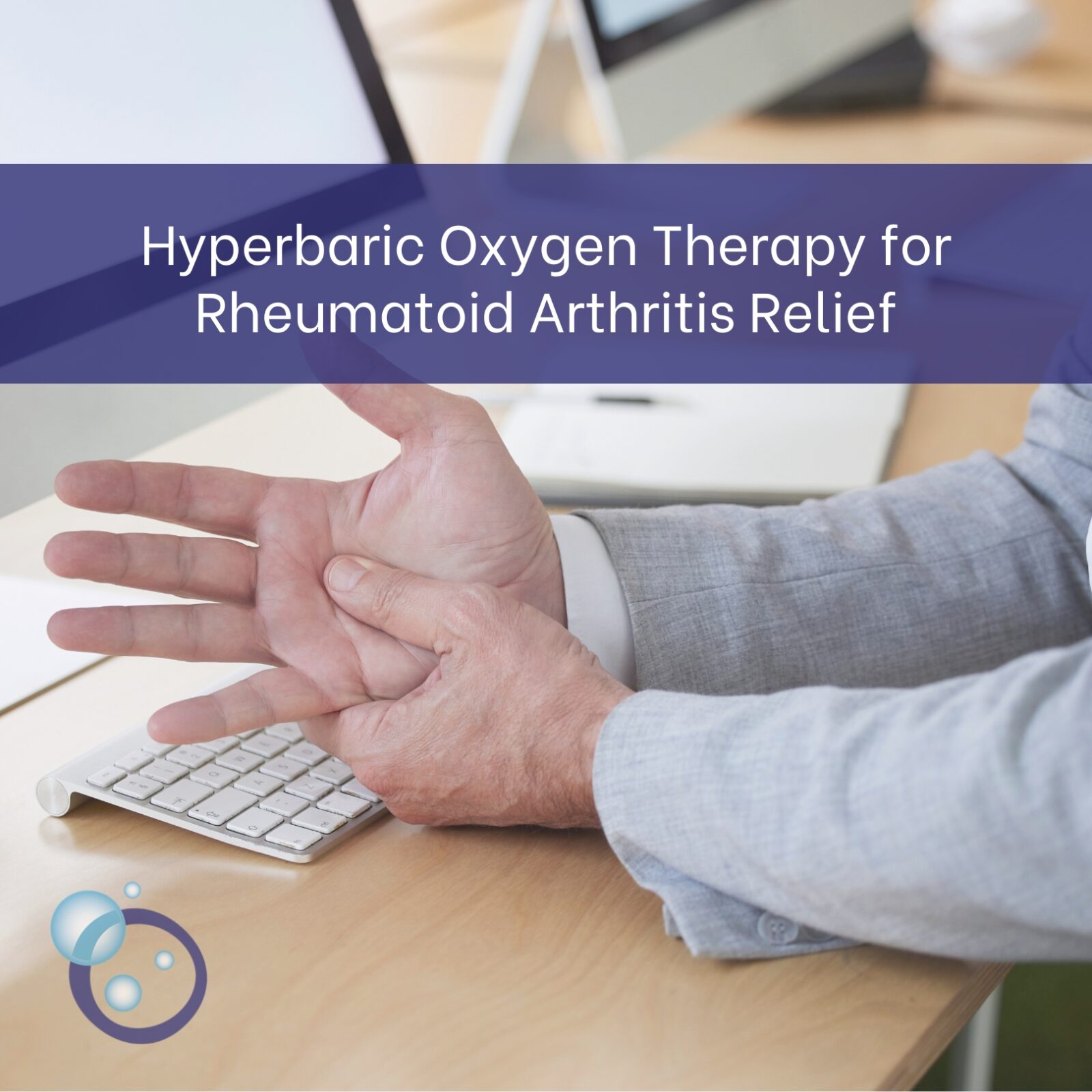
Managing Autoimmune Diseases: The Role of Hyperbaric Oxygen Therapy in Alleviating Rheumatoid Arthritis Symptoms
Rheumatoid arthritis (RA) is an autoimmune disease that causes chronic inflammation in the joints, leading to pain, stiffness, and swelling. As the condition progresses, it can significantly affect a person’s quality of life, making daily tasks increasingly difficult. While there are various treatments available to manage RA symptoms, hyperbaric oxygen therapy (HBOT) is is gaining recognition as an effective, non-invasive option to help alleviate discomfort and promote healing. In this post, we will explore how HBOT works and its potential benefits for those living with rheumatoid arthritis.
What is Hyperbaric Oxygen Therapy?
Hyperbaric oxygen therapy involves breathing 100% oxygen in a pressurized chamber, allowing the body to absorb higher levels of oxygen than what is possible at normal atmospheric pressure. This process helps promote tissue repair, reduce inflammation, and enhance the body’s natural healing mechanisms. While HBOT is commonly used to treat conditions like chronic wounds and carbon monoxide poisoning, its benefits are increasingly being recognized in the management of autoimmune diseases, including rheumatoid arthritis.
How HBOT Can Help Rheumatoid Arthritis
Rheumatoid arthritis occurs when the immune system mistakenly attacks the body’s own tissues, specifically the synovium, which is the lining of the joints. This leads to inflammation, pain, and eventual joint damage. Hyperbaric oxygen therapy can provide several benefits for individuals with RA:
- Reduction of Inflammation
One of the most significant effects of HBOT is its ability to reduce inflammation. Research has shown that breathing in oxygen at higher pressures can reduce the production of inflammatory cytokines, which are proteins that play a key role in the inflammatory response. By reducing inflammation in the joints, HBOT can help alleviate pain, swelling, and stiffness commonly experienced by people with RA.
- Promoting Tissue Repair and Healing
Chronic inflammation in the joints often leads to damage in the cartilage and other tissues. HBOT has been shown to stimulate the production of collagen and other healing factors that promote tissue repair. The increased oxygen supply can also enhance the function of fibroblasts, which are cells responsible for tissue regeneration. By accelerating the healing process, HBOT can help prevent further joint damage and improve overall joint function.
- Pain Relief and Improved Mobility
Pain management is a key concern for those with rheumatoid arthritis, as constant joint pain can severely impact daily activities. HBOT has been shown to have analgesic (pain-relieving) effects. By improving oxygen delivery to the affected tissues, it can help reduce pain and stiffness in the joints, providing relief and allowing for improved mobility. This can make it easier for individuals with RA to perform daily tasks that were once difficult or impossible.
Clinical Evidence Supporting HBOT for Rheumatoid Arthritis
Several studies and clinical trials have investigated the use of hyperbaric oxygen therapy in rheumatoid arthritis treatment. One study found that patients with RA who underwent HBOT experienced significant improvements in pain levels, joint swelling, and overall physical function. Another study reported that HBOT helped reduce the need for pain medications, further highlighting its potential as a non-invasive, drug-free treatment option.
Conclusion
While hyperbaric oxygen therapy is not a cure for rheumatoid arthritis, it offers a valuable adjunct treatment that can significantly improve the quality of life for those suffering from this debilitating condition. By reducing inflammation, promoting tissue repair, and providing pain relief, HBOT can help individuals with RA manage their symptoms more effectively.